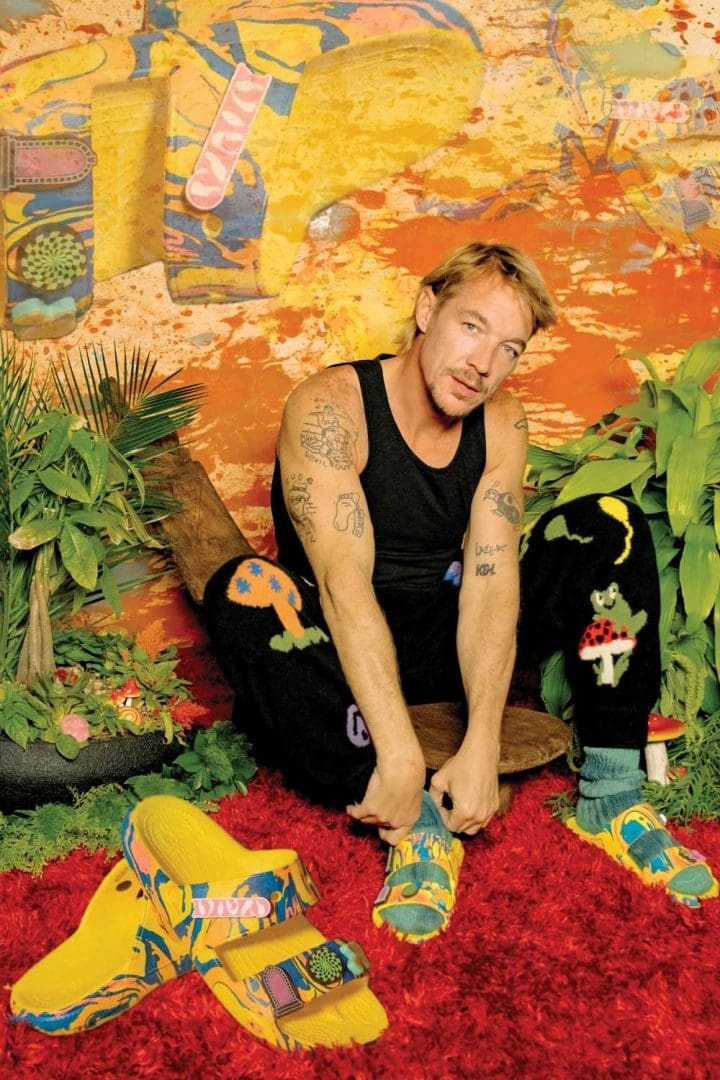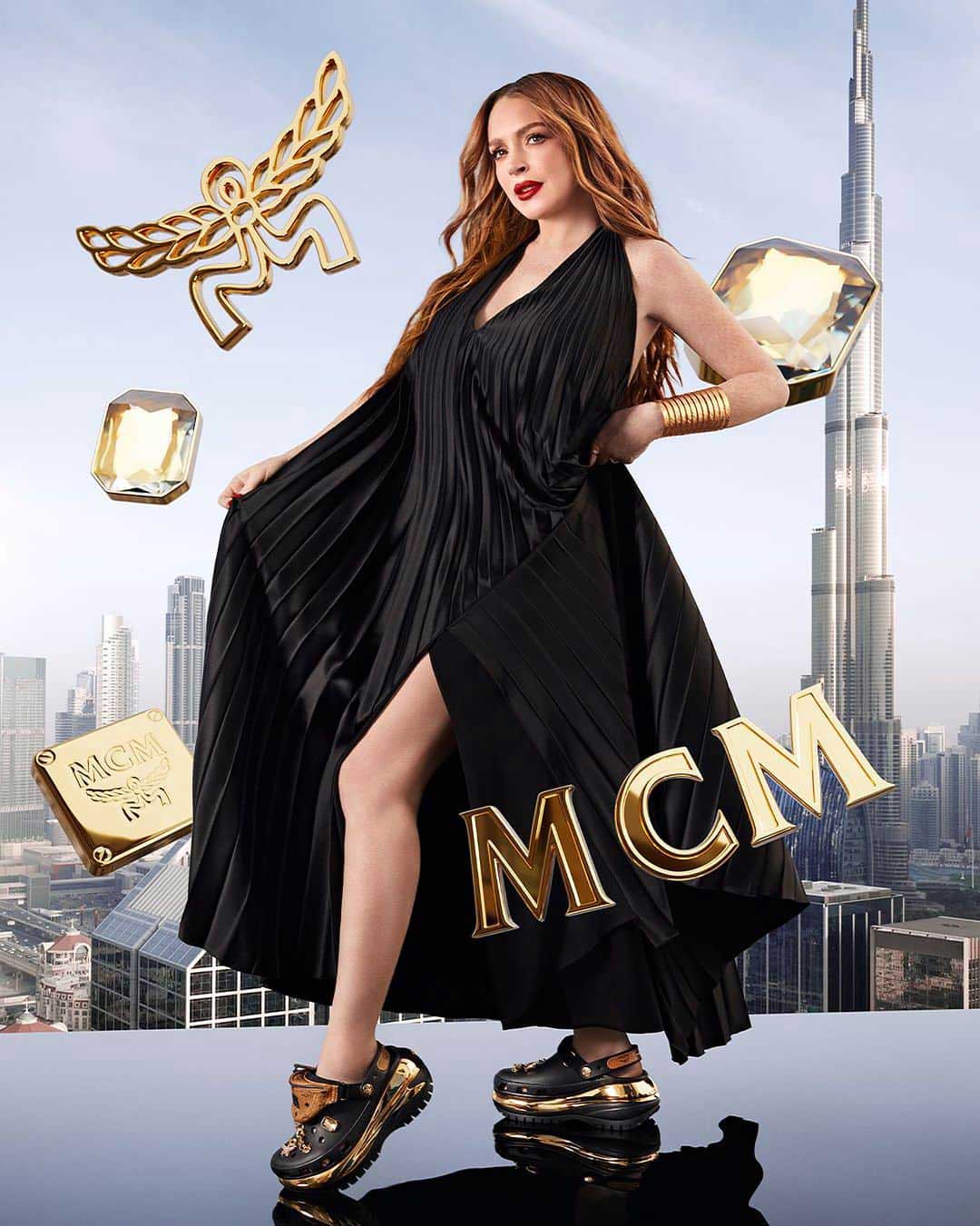The King Of Ugly Cool: How To Sell The Unsellable
This story starts with a burnt out car. Its charred interior covered in soot, grime and broken glass. In the centre console, relatively unscathed is a giant travel mug. The girl filming what remains of her vehicle picks up the cup and shakes it. There’s still ice in it, ready to offer a soothingly fresh sip, even if the lid is a bit grotty.
And then boom, Tiktok user @danimarielettering sent Stanley 1913 stratospheric with some of the best advertising they might ever have. Cue a montage of empty shelves, people literally queuing outside shops to get their hands on limited edition colourways, and even one guy jumping a counter to make off with a bag of cups only to get tackled to the ground by concerned citizens. Things are getting real out there.
sandals from the domain of toddlers in gardens to red carpet A-listers. It’s a bonafide fashion statement, partly because of how polarising they really are. He managed to turn Crocs around in the space of five years, starting in 2013 as chief marketing officer. Limited editions abounded and Justin Bieber let some of his star power wear off on the footwear. In 2020, at the pinnacle of Crocs popularity he promptly left. His job there was done.

He jumped ship to become the global president of Stanley 1913, and he’s taking it places. It has gone from respectable camping cookware and coolers to the newest must have item. Revenue has doubled annually and demand for The Quencher is up 300%. Finding a cup of ice in a burned out car is great advertising, but getting it in there in the first place was its own challenge.
The marketing guru had a hold of a company that was solidly a male brand. It was for hikers, and manly men who wanted a bottle that had been a staple in B-17 Flying Fortresses giving Jerry what-for. Advertising for their bottles featured the product falling off a construction site buildings and landing in wheelbarrows.
The company was respectable, venerable even. But it wasn’t growing.
They then released the iconic Quencher in 2016, an army green like everything else they made. Perfect for not spooking deer.
It failed. By 2019 Stanley had started to cut their losses and stopped marketing the bottle. On a tour of the company when he joined Reilly spoke to employees about what was and wasn’t working with the place. One of the employees namedropped a small shopping site called The Buy Guide that adored the bottle and saw it’s potential enough to beg Stanley to keep making it. Until then the company had ignored them. Reilly wasn’t about to put his own neck out for some random blog, but he also knew the power of small influencers. He had long since given up TV, instead the 55 year old is cruising TikTok, and this space is dominated by the demographic that had been sorely forgotten by Stanley, the entire other half of the planet, women. So he offered Buy Guide cofounder, Ashlee LeSueur the option to put her money where her mouth was and do a wholesale order and sell the cups straight to her audience. It cleaned out her business account and ate into her savings but she believed in the Quencher more than the company that made it.

LeSueur’s gamble paid off, and the cups sold out within days. Stanley leaned into the partnership and made them new colours to try out with great success.
They then began using a technique Reilly had incorporated early in his career when he worked at Footaction. Treat the cups like shoes. Sneakerheads love limited releases, midnight drops and celebrity collabs.
“My experience at Crocs was fueled by collaboration culture and drop culture,” Reilly told CNBC. “And I knew that once we had our legs under us at Stanley, and once we could see the connection to consumers that we were creating, we were also ready for collaborations.”
The best thing that can happen as a brand is running out of stock, with scarcity driving hype to new heights.
“We really continue to increase the number of units available each time we drop, because we see the trend and the waiting lists that are growing,” Reilly told CNBC. “But there’s only so many seats in the stadium, and when the seats are sold out, they’re sold out.”
These waiting lists he was watching were getting scary big. With up to 150,000 people in line according to an Interview with Inc Australia. “Not everybody could get a Stanley, and that’s a brand’s dream.”

When they first started their coloured sets they had just five to choose from. When they blew up in 2021 they injected the market with ten more. Now they almost do one a month. The limited supply drops also ensure that stores don’t stay overstocked.
Recent collabs with Starbucks and Target have resulted in a thriving re-sellers market, with people flipping them on Ebay for twice the price, forcing Target to introduce buy restrictions to two per customer.
Catering to collectors has created some truly impressive results, not just to their bottom lines. People have dedicated walls in their house to their hoard of Stanleys, arranged in a pastel rainbow. Each cup a forgotten promise to be nicer to the planet, a forever cup to save on plastic. Dozens and dozens of them. Aspirational. When asked about these big collectors by The Guardian, Reilly pointed out that “we’re very proud of how sustainable the product is itself. And we’re thrilled that it represents the many ways that she expresses herself throughout her day.”
Keeping in mind the absurdity of this, it should be remembered that Stanley is ramping off a market that until recently was totally against it. Covid messed with everything, Not only weren’t people going out much to even need a totable water bottle, there was also a fear that reusable bottles may somehow be less hygienic than just going back to using disposable cups. The ubiquitous KeepCup saw a massive 80% sales drop during the covid years.
So how do you truly measure the success of your product outside of sales? How do you know you’ve nailed the branding? According to his interview with Inc. “it comes down to watching what people have on them at an airport. Whittled down to the bare necessities, what do they consider important?” Originally crocs were the icon of someone who had given up. If they were in an airport it was a pretty sad affair. By the time Reilly left Crocs they were a conscious choice made by gangs of people wanting to look good. Stanley is quickly going the same way.
Oh, and the lady with the torched car? Stanley 1913 got her a new one.

